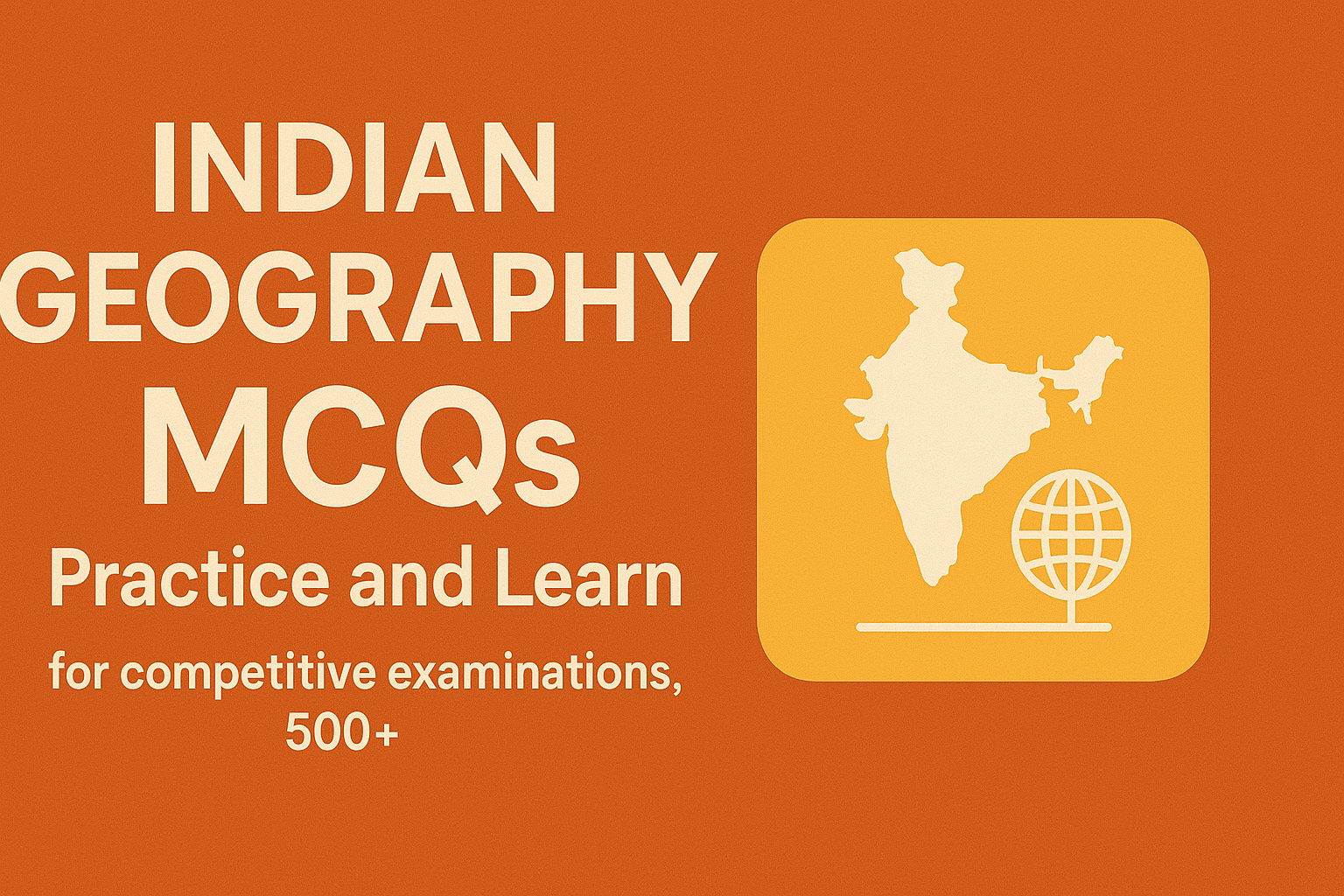
MCQ on Indian Geography
In which year was the first sub-urban railway started in India, with its inauguration in Mumbai?
What is the name of the research institute established in 1983 by the Central Silk Board to support the silk industry?
India possesses 24% of the world's known and economically viable reserves of which mineral, primarily mined along the shores of Kerala?
India is the world's biggest producer of which of the following mineral products?
Which company, established in 1961, started India's first naphtha-based chemical industry in Mumbai?
The Bokaro Steel Plant, set up in 1964, was established with collaboration from which country?
Which agricultural revolution is associated with the production of fruits, honey, and overall horticulture development?
In which regions are Peaty and marshy soils typically found in India?
The cultivation of coffee, a tropical plantation crop, was initially introduced in India on which hills?
Which of the following states is a major producer of Ragi, a millet crop of dry regions?
